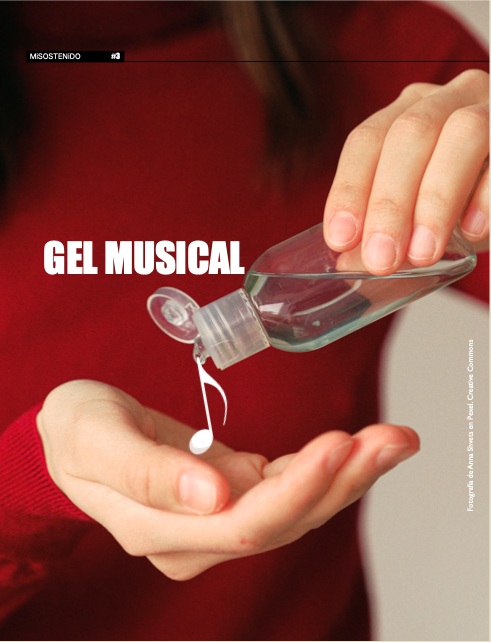Improve reading skills and self-esteem in dyslexical students. An intervention proposal based on music therapy.
Keywords:
Music therapy, primary education, developmental dyslexia, reading skill, self-esteemAbstract
Currently, Primary Education students may suffer from various learning disorders, which can hinder the teaching and learning process. In this sense, the most common specific learning disorder in the educational realm is called developmental dyslexia, which affects between 5-15% of students in schools, and constitutes 80% of the diagnoses of learning disorders. This disorder is a major obstacle to reading acquisition in students who have it, thus affecting their reading skills, academic performance, motivation, self esteem and self-confidence. In addition, emotional and behavioural problems may be encountered, as well as school drop-out situations. It is evident that this disorder generates an important educational need in this regard and therefore this article proposes the design of an intervention plan based on the area of music therapy to promote reading skills and self-esteem in students with dyslexia in primary education, thus highlighting the great therapeutic value of music and its effectiveness in the treatment of this disorder.
Downloads
References
Alexander-Passe, N. (2007). The sources and manifestations of stress amongst school-aged dyslexics, compared with sibling controls. Dyslexia, 14, 291-313. https://doi.org/10.1002/dys.351
Anvari, S. H., Trainor, L. J., Woodside, J. & Levy, B. A. (2002). Relations among musical skills, phonological processing, and early reading ability in preschool children. Journal of Experimental Child Psychology , 83(2), 111-130. https://doi.org/10.1016/S0022-0965(02)00124-8
Artigas-Pallarés, J. (2002). Problemas asociados a la dislexia. Revista de Neurología , 34(1), 7-13. https://doi.org/10.33588/rn.34S1.2002063
Besson, M., Chobert, J. & Marie, C. (2011). Transfer of training between music and speech: common processing, attention, and memory. Frontiers in Psychology, 2(94). https://doi.org/10.3389/fpsyg.2011.00094
Cogo-Moreira, H., Andriolo, R., Yazigi, L., Ploubidis, G., Brandao de Ávila, C. R. & Mari, J. (2012) Music education for improving reading skills in children and adolescents with dyslexia. Cochrane Library: Cochrane Database of Systematic Reviews, 8(8). https://doi.org/10.1002/14651858.CD009133.pub2
De la Peña, C. y Bernabéu, E. (2018). Dislexia y discalculia: una revisión sistemática actual desde la neurogenética. Universitas Psychologica, 17(3). https://doi.org/10.11144/Javeriana.upsy17-3.ddrs
Etchepareborda, M. C. (2002). Detección precoz de la dislexia y enfoque terapéutico. Revista de Neurología, 34(1), 13-23. https://doi.org/10.33588/rn.34S1.2002041
Flaugnacco, E., Lopez, L., Terribili, C., Montico, M., Zoia, S. & Schön, D. (2015). Music Training Increases Phonological Awareness and Reading Skills in Developmental Dyslexia: A Randomized Control Trial. PLoSONE, 10(9), e0138715. https://doi.org/10.1371/journal.pone.0138715
Flaugnacco, E., Lopez, L., Terribili, C., Zoia, S., Buda, S., Tilli, S., Monasta, L., Montico, M., Sila, A., Ronfani, L. & Schön, D. (2014). Rhythm perception and production predict reading abilities in developmental dyslexia. Frontiers in Human Neuroscience, 8, 392. https://doi.org/10.3389/fnhum.2014.00392
Forgeard, M., Schlaug, G., Norton, A., Rosam, C., Iyengar, U. & Winner, E. (2008). The relation between music and phonological processing in normal-reading children and children with dyslexia. Music Perception, 25(4), 383-390. https://doi.org/10.1525/mp.2008.25.4.383
Forteza, D., Fuster, L. y Moreno-Tallón, F. (2019). Barreras para el Aprendizaje y la Participación en la Escuela del Alumnado con Dislexia: Voces de familias. Revista Internacional de Educación para la Justicia Social, 8(2), 113-130. https://doi.org/10.15366/riejs2019.8.2.006
Gfeller, K. E. (1999). Music therapy in the schools. En Davis, W. B., Gfeller, K. E. & Thaut, M. H. (Eds.). An introduction to music therapy: Theory and practice (pp. 259-272). McGraw- Hill.
Goswami, U., Huss, M., Mead, N., Fosker, T. & Verney, J. P. (2013). Perception of patterns of musical beat distribution in phonological development dyslexia: Significant longitudinal relations with word rea- ding and reading comprehension. Cortex, 49(5), 1363-1376. https://doi.org/10.1016/j.cortex.2012.05.005
Habib, M., Lardy, C., Desiles, T., Commeiras, C., Chobert, J. & Besson, M. (2016). Music and Dyslexia: A New Musical Training Method to Improve Rea- ding and Related Disorders. Frontiers in Psychology, 7(26), 1-15. https://doi.org/10.3389/fpsyg.2016.00026
Jellison, J. A. (2000). A content analysis of music re- search with disabled children and youth (1975-1999): Applications in special education. En Smith, D. S. (Ed.). Effectiveness of music therapy procedu- res: Documentation of research and clinical practice (pp. 199-264). Silver Spring, MD. The American Music Therapy Association.
Kennedy, R. & Scott, A. (2005). A Pilot Study: The Effects of Music Therapy Interventions on Middle School Students' ESL Skills. Journal of Music Therapy , 42(4), 244–261. https://doi.org/10.1093/jmt/42.4.244
López, A. (2015). Musicoterapia con adolescentes bajo medidas judiciales en régimen abierto. Música, Terapia y comunicación, 35, 31-48.
Louleli, N., Hämäläinen, J. A., Nieminen, L., Parviainen, T. & Leppänen, P. H. T. (2020). Dynamics of morphological processing in pre-school children with and without familial risk for dyslexia. Journal of Neurolinguistics , 56, 1-21. https://doi.org/10.1016/j.jneuroling.2020.100931
Madsen, C. K. & Alley, J. M. (1979). The effect of reinforcement on attentiveness: A comparison of behaviorally trained music therapists and other professionals with implications for competency-based academic preparation. Journal of Music Therapy, 16(2), 70-82. https://doi.org/10.1093/jmt/16.2.70
Madsen, S. (1991). The effect of music paired with and without gestures on the learning and transfer of new vocabulary: experiment-derived nonsense words. Journal of Music Therapy, 28(4), 222-230. https://doi.org/10.1093/jmt/28.4.222
Mina, F., Darweesh, M. E., Khavab, A. N. & Serag S. M. (2021). Role and efficacy of music therapy in learning disability: a systematic review. The Egyptian Journal of Otolaryngology, 37(1). https://doi.org.10.1186/s43163-021-00091-z
Montello, L. (1998). Effects of active versus passive group music therapy on preadolescents with emotional, learning, and behavioral disorders. Journal of Mu sic Therapy, 35(1), 49-67. https://doi.org/10.1093/jmt/35.1.49
Overy, K. (2000). Dyslexia, temporal processing, and music: the potential of music as an early learning aid for dyslexic children. Psychology of Music, 28, 218–229. https://doi.org/10.1177/0305735600282010
Overy, K. (2006). Dyslexia and Music. From Timing Deficits to Musical Intervention. The New York Academy of Sciences, 999(1), 497-505. https://doi.org/10.1196/annals.1284.060
Pasiali, V., LaGasse, A. B. & Penn, S. L. (2014). The effect of musical attention control training (MACT) on attention skills of adolescents with neurodevelopmental delays: A pilot study. Journal of Music Therapy, 51(4), 333-354. https://doi.org/10.1093/jmt/thu030
Peterson, R. L. & Pennington, B. F. (2012). Developmental dyslexia. Lancet, 379(9830), 1997–2007. https://doi.org/10.1016/S0140-6736(12)60198-6
Przybylski, L., Bedoin, N., Krifi-Papoz, S., Herbillon, V., Roch, D., Léculier, L., Kotz, S.A. y Tillmann, B. (2013). Rhythmic auditory stimulation influences syntactic processing in children with developmental language disorders. Neuropsychology, 27(1), 121–131. https://doi.org/10.1037/a0031277
Ramus, F., Rosen, S., Dakin, S. C., Day, B. L., Castellote, J. M., White, S. y Frith, U. (2003). Theories of developmental dyslexia: insights from a multiple case study of dyslexic adults. Brain, 126(4), 841- 865. https://doi.org/10.1093/brain/awg076
Register, D., Darrow, A., Standley, J. y Swedberg, O. (2007). The Use of Music to Enhance Reading Skills of Second Grade Students and Students with Reading Disabilities. Journal of Music Therapy, 44(1), 23-37. http://dx.doi.org/10.1093/jmt/44.1.23
Serrano, F. y Defior, S. (2008). Dyslexia speed problems in a transparent orthography. Annals of Dyslexia, 58, 81-95. http://dx.doi.org/10.1007/s11881-008-0013-6
Snowling, M. J., Hulme, C. y Nation, K. (2020). Defining and understanding dyslexia: past, present, and future. Oxford Review of Education, 46(4), 501-513. https://doi.org/10.1080/03054985.2020.1765756
Soriano-Ferrer, M. y Piedra, E. (2017). Una revisión de las bases neurobiológicas de la dislexia en población adulta. Neurología, 32(1), 50-57. https://doi.org/10.1016/j.nrl.2014.08.003
Standley, J.M. (1997). Evaluation of an early intervention music curriculum for enhancing prereading/ writing skills. Music Therapy Perspectives, 15, 79-85.
Standley, J. M. (2008). Does music instruction help children learn to read? Evidence of a meta-analysis. Update: Applications of Research in Music Education, 27, 17–32. http://dx.doi.org/10.1177/8755123308322270
Sugaya, A., Fukushima, K., Takao, S., Kasai, N., Maeda, Y., Fujiyoshi, A., Kataoka, Y., Kariya, S. y Nishizaki, K. (2019). Impact of reading and writtng skills on academic achievement among school-aged hearing-impaired children. International Journal of Pediatric Otorhinolaryngology, 126. https://doi.org/10.1016/j.ijporl.2019.109619
Vellutino, F.R., Fletcher, J.M., Snowling, M.J. y Scanlon, D.M. (2004). Specific reading disability (dyslexia): What have we learned in the past four decades? Journal of Child Psychology and Psychiatry and Allied Disciplines, 45(1), 2-40. https://doi.org/10.1046/j.0021-9630.2003.00305.x
Wolfe, D.E. y Noguchi, L.K. (2009). The use of music with young children to improve sustained attention during a vigilance task in the presence of auditory distractions. Journal of music therapy, 46(1), 69–82. https://doi.org/10.1093/jmt/46.1.69








